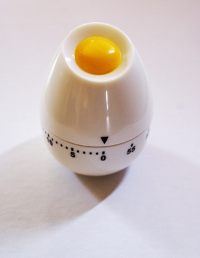 “Let’s stay on task!” is a phrase that some elementary school teachers say at least once a day. This comment is intended to help creative thinkers focus on their math equations instead of the homemade rubber band ball with which they’re playing. This comment is also intended to encourage self-discipline and follow-through. For those of us who have graduated from elementary school, sometimes it’s helpful to have our own “let’s stay on task” reminders to help us complete a project we’d really like to accomplish. There are all kinds of things that we can use as reminders these days. Perhaps the following three friendly reminder vehicles will help you “stay on task” this upcoming weekend:
“Let’s stay on task!” is a phrase that some elementary school teachers say at least once a day. This comment is intended to help creative thinkers focus on their math equations instead of the homemade rubber band ball with which they’re playing. This comment is also intended to encourage self-discipline and follow-through. For those of us who have graduated from elementary school, sometimes it’s helpful to have our own “let’s stay on task” reminders to help us complete a project we’d really like to accomplish. There are all kinds of things that we can use as reminders these days. Perhaps the following three friendly reminder vehicles will help you “stay on task” this upcoming weekend:
1. The kitchen timer: On laundry day, I find this device to be especially valuable. After I put a load of laundry in the washer, I set our kitchen timer for about 40 minutes later – when I expect the wash cycle to conclude. There have been many times when I’ve started a load of laundry and completely forgotten about it, but the timer keeps me on track and reminds me that wet clothes are awaiting the warmth of the dryer. By using the timer for every load of laundry, our clothes are washed and dried in just a few hours instead of over a full day.
2. The flexible to do list: To do lists are magnificent for capturing what needs to be done. And when we recognize that they’re “flexible,” they’re even better. A few weeks ago I had a lengthy to do list and a holiday weekend at my fingertips. Rather than attempting to plow through the to do list all in one day, I completed various things on the list throughout the long weekend, and a sense of flexibility enabled me to do whatever I was inspired to do on the list. Everything was accomplished in a joyous, harmonious fashion because the list wasn’t driving my version of organizational bliss – it was just supporting it!
3. The clock: Clocks are wonderful tools that help me stay on task. If I want to work on a project but know that I won’t be able to complete it in one day, I’ll schedule a time frame for the project. As in: “during the next two hours I will sort as many magazine articles as I can in an effort to reduce my magazine mayhem.” Sometimes working on projects in two or four-hour stints can make all the difference in supporting progress and encouraging your version of organizational bliss.
Wishing you much joy as you “stay on task!”
* Photo by marsy



